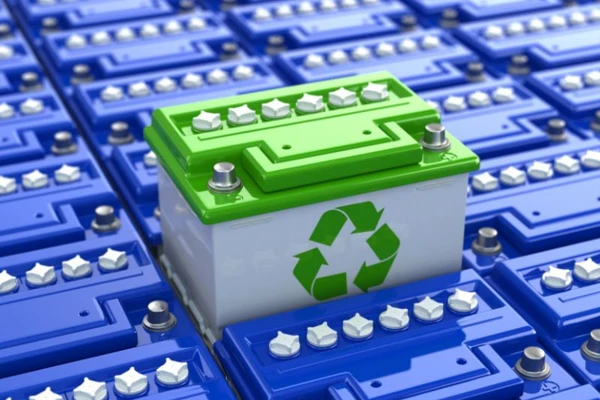European Union (EU) and India announce collaborative initiative for electric vehicle (EV) battery recycling.
About the Initiative:
- This collaboration falls under the India-EU Trade and Technology Council (TTC), emphasizing the shared dedication to sustainable development and technological innovation.
- This initiative aims to boost collaboration between small and medium-sized enterprises (SMEs) and startups from both regions.
- It facilitates the exchange of knowledge and expertise essential for promoting circular economy practices and attaining carbon neutrality objectives.
Significance of EV Battery recycling:
- Reduces environmental impact: Recycling batteries keeps them out of landfills, reduces the need for mining, and reduces the carbon footprint of raw materials.
- Conserves resources: Recycling reduces the need for virgin resources, which can be resource-intensive and ecologically damaging.
- Reduces greenhouse gas emissions: Lithium-ion batteries can reduce energy consumption and greenhouse gas emissions.
- Repurposes valuable materials: Reusing 50% of these batteries and efficiently recycling them can decrease the yearly need for new lithium, cobalt, nickel, and manganese mining by 3% in 2030 and 28% in 2050.
- Makes EVs more affordable: Promotes circular economy to reduce the cost of new batteries.
- Meet targets of Battery Waste Management Rules, 2022: It has set a target of 90% recovery of battery material by 2026-27 onwards, with 70% by 2024-25 and 80% by 2026.
Challenges in EV Battery recycling:
- Complex chemistry: The chemistry of EV batteries varies between formulations, which can make recycling difficult.
- Volume and scale: As more EVs are on the road, the volume of batteries reaching the end of their life cycle will increase.
- Cost: The complex nature of battery components and the need for specialized equipment can make recycling expensive.
- Lack of standardization: There are no standardized processes for assessing the remaining capacity of EV batteries.
- Environmental impact: Recycling processes can consume a lot of energy and generate toxic emissions.
- Safety: Spent lithium-ion batteries (LIBs) contain toxic and flammable materials that can catch fire or explode.
- Lack of authorized agencies running battery disposal and recycling programs: Around 90% of India’s used batteries are either handled by the unorganized sector or end up in landfills.
India’s effort for EV Battery recycling:
The Battery Waste Management (Amendment) Rules, 2023:
- The Battery Waste Management (Amendment) Rules, 2023, are introduced to improve battery waste management.
- The Rules have established measurable targets for collection and recycling within specific compliance timeframes.
- They aim for a 90% recovery of battery material, with targets set at 70% by 2024-25, increasing to 80% by 2026, and ultimately reaching 90% after 2026-27 onwards.
- Producers will be required to incorporate 5% recycled material in the total dry weight of a cell by 2027-28, increasing to 20% by 2030-31.
- The regulations allow for transactable Extended Producer Responsibility certificates for producers who ensure environmentally sound management of waste batteries, calculated based on the weight of the batteries processed.
Ref:Source
| UPSC IAS Preparation Resources | |
| Current Affairs Analysis | Topperspedia |
| GS Shots | Simply Explained |
| Daily Flash Cards | Daily Quiz |


